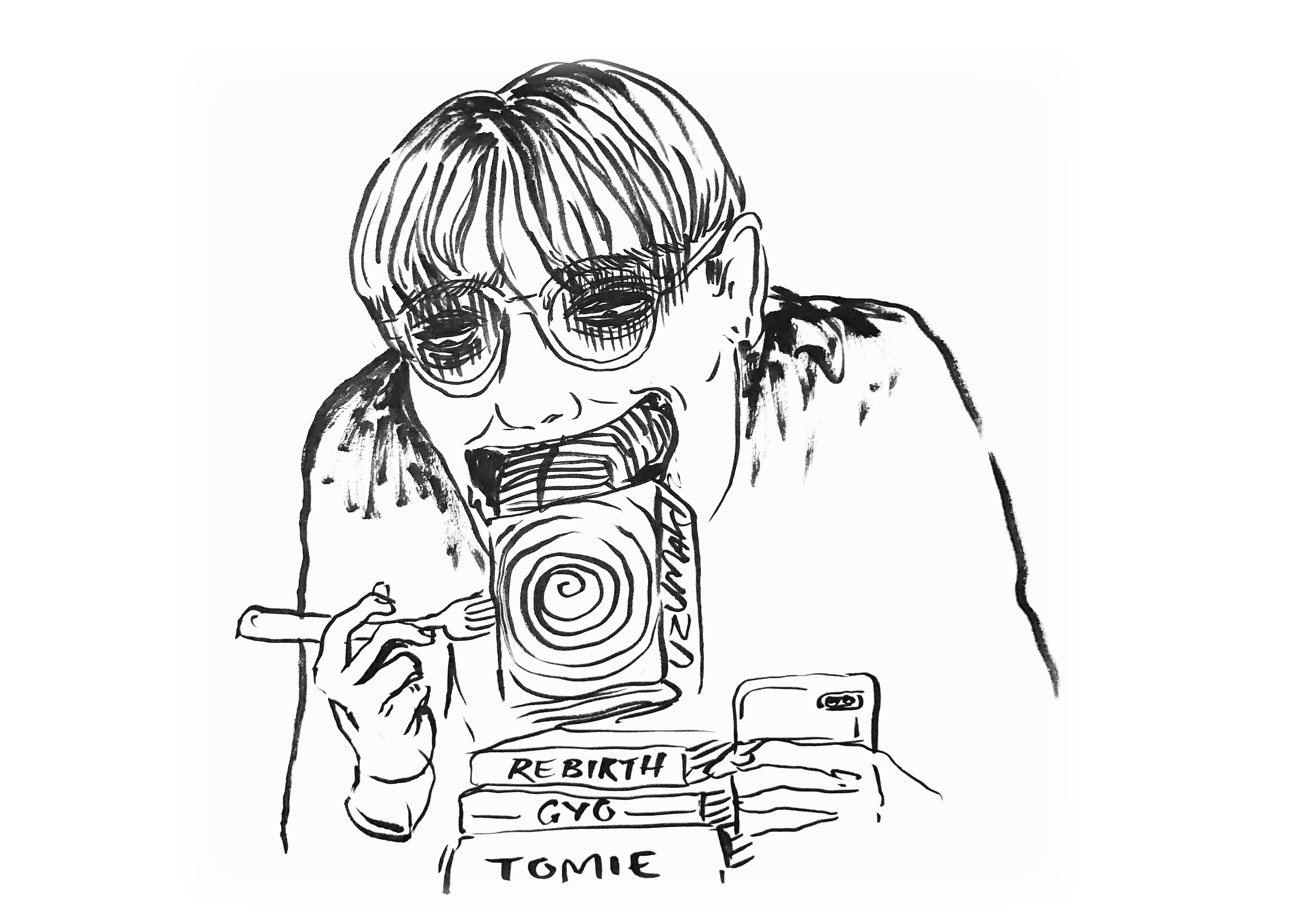Junji Ito: horror maestro of manga, and a well known influential mangaka in Japan, is barely acknowledged within the western realm. His affinity for horror began in childhood, where he became a horror comic hobbyist under the influence of his sister’s drawings and Umezu Kazou comics. Upon reaching middle age, Ito was met with a dichotomy — to continue with the corporeal terrors of dentistry, or to follow his dream of horror fiction. Luckily, he was supported by his already published work (he had submitted his manga to magazines), and had already gained widespread recognition and success. To the benefit of world culture, an auspicious career as a dental technician was set aside and in favour of his art.
Ito’s appeal lies in profound concepts and recurring subject matter. These foundational aspects of his work form a signature style that never fails to sew deep rooted feelings of intrigue and dread. As an artist he is drawn towards warped, deeply pessimistic alternative universes. Common concepts throughout his work include body horror, societal collapse, the inevitability of death and profound human fixations. These are all concepts which form questions, appreciation and/or disdain towards human behaviour. A prime example of this lies within Uzumaki, Ito’s first and arguably most popular work, a series bound by situations where instinctual behaviours and actions arise as characters become victim to the town’s ‘curse of the spiral.’ In this manga, intrinsic human greed and methods of survival simultaneously drive characters apart and turn them against one another. Focal points of Ito’s subject matter are properties found within the organic and manmade world – marine fauna, flora, the human body, all these elements warped to grotesque levels amidst conventional Japanese prefecture settings. These focal points find themselves building foundations throughout Ito’s work, and are specifically featured within Uzumaki.
My first personal encounter with Ito goes back to my stronger (read: regretful) weaboo years when I was an avid reader of manga. Foraging for psychological thrillers through baseless searches, I was somehow lucky enough to chance upon Uzumaki: spiral into horror. I became highly addicted and have not recovered since. I made it my main goal to unearth every piece of his craft, rereading several to try to absorb the life enriching fibre that is Ito’s work. His art has influenced my own; fascinated by panel work and the horror genre I strive to one-day form cohesive narrative as he does. During my final year of high school, I was gifted a hardback of Uzumaki, my most prized possession, and now having experienced a tangible piece of work it feels necessary to collect the rest. Possibly, I will form a small shrine to Ito, and strengthen an obsession very close to that experienced by victims of the spiral in Uzumaki.
Ito Junji’s work can be considered underrated from a western perspective as many are reluctant to consider manga worthy time investment, let alone considering as art. However, Ito’s manga defies many (conceivable) stereotypes towards this art form. The artwork has a non traditional style, yet doesn’t exaggerate the human figure or character’s gender roles to unrealistic proportions. The plot lines of his work hold depth and heavy content while retaining an easily readable structure. Moreover, a higher understanding of the aesthetic of horror, regardless of how grotesque, remains to be a significant contribution to his overlooked artfulness. As we make our way unto an unavoidable end, it is safe to say I will personally endeavour to put Ito Junji’s name forward in the realm of art. He has made something within the horror genre that regardless of how many times I have read it, no matter how long my eyes remain fixated in the sticky trap of repulsion, remains fresh and authentic. If anything, (if not everything) that should define Ito as an artist who deserves recognition, it is his concepts and how they come across as new ink on the old, ink blackened paper of horror done time and time again. Read his work, find a tome of Uzimaki on backlit screen or as object in your grasp, and you cannot help but think: I have not seen this before. He takes elements of our own world and warps them until we can’t help but be self aware, for he is only embodying our own interaction, wrapping it in ink, placing it on white paper. Ito crafts fear and asks it to lurk at the back of your retina, press it on the world around you and be something perhaps, better than before.
Words and art by Skye Newton
This article first appeared in print volume 88 edition 1 HEAT

